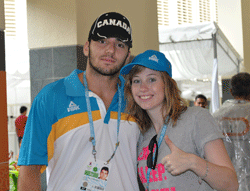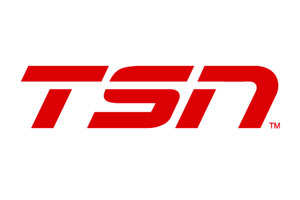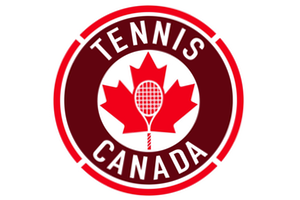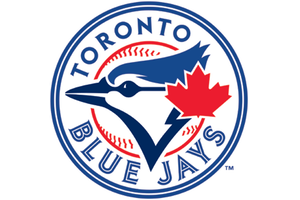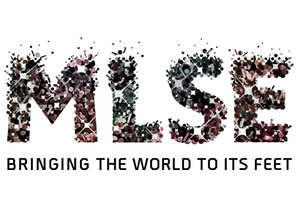This is the final Blog by Emily Ridlington, Sports Media Canada Special Correspondent and International Olympic Committee Young Reporter, based on her experiences at the recent Youth Olympics in Singapore.
Two young people from two very different countries with two very different backgrounds were brought together to interact all because of one tiny sought item: a pin. Athletes, coaches, support staff and volunteers all sported their lanyards with their official accreditation adorned with pins from countries across the globe.
It is an Olympic tradition to trade pins. For some, it is a new phenomenon and for some young athletes it is a cherished pastime for those who have gone to compete at larger international meets before. This hobby, while meant to be fun, is quite serious. Some are after hard-to-get and unique pins, while others are just trying to collect as many as they can during the duration of the Games.
Team Canada’s chief medical officer for the Youth Olympic Games and a dear friend of mine is Dr. Dory Boyer. He is the “Pin Doctor” a.k.a. pin trader extraordinaire. Dory has been to a number of Olympic Games and has mastered this important skill. Interested and perhaps more than a bit curious, I went with Dory to the Pin Trading Centre in the heart of the Athletes’ Village to see what all the hype was about.
Laid out on tables in neatly lined rows pinned onto black felt covered pages were thousands of pins, some from countries I must admit I had never even heard of. Milling about are dozens of pin traders looking to get their hands on a pin they have been longing for or any pin in particular.
Like any athlete, Dory goes in with a strategy and knows what he wants: that gold medal pin he has been searching for. Now I can’t give away all of the Pin Doctor’s secrets but he does come armed with a list of what he is looking for. Pins with the year, name and location of the Games along with the name of the country are the most desired and unique.
After spending about 45 minutes shadowing Dory and picking up a few pins myself, Dory has the hit the jackpot and found one of the pins he has been looking for. Success! By the end of the Games, Dory was able to collect pins from all 204 countries who participated. In my eyes, he takes pin trading to a new level but it is a fun and healthy hobby which generates conversations between those from different nationalities.
Athletes wandering around the village also did quite well and my Canada pins were highly sought after and were hot commodities. Everyone wanted something with the maple leaf on it in red and white.
Some athletes who approached me wanting a pin were not quite sure where Canada was but had heard of the country. These interactions allowed for educational moments and tiny geography lessons. I didn’t do as well as Dory in the pin trading department but managed to pick up about 40 or so.
Now, seeing me perhaps slightly hooked on the pin trading phenomenon, Dory also introduced me to another trading tradition of an Olympic Games. After the closing ceremonies, athletes will trade their team gear amongst each other. I did get a chance to wear my team Canada uniform, perhaps not as much as I would have liked, but as I journalist, I did have to stay neutral.
Dory and I and Dinah Hampson, one of our physiotherapists, set up shop in the village on a bench near the dining hall. We spread out our gear and were open for business. It probably wasn’t the best day for trading as it was pouring rain (of course, the only day we saw rain fall from the sky for more than an hour), but we were determined all the same.
It was slow going at first but I managed to do quite well. Like the Canadian pins, our clothes were much sought after. As most of these athletes have not attended large scale international events like an Olympics, the concept of trading gear was a foreign one. Once we told them what we were doing, they immediately took interest.
I took the approach of a one-for-one trade, an example being a hat for a hat. Some countries who had more funds to spend on their uniforms or had sponsors, sported more elaborate outfits. Dinah and I were after the Aussies’ jackets which were long and complete with hoods. No luck though.
After a couple of hours I managed to pick up shirts from Ukraine and Senegal, hats from Cyprus and Turkey, a jacket from Spain, shorts from Mexico and a backpack from Israel. I have quite the international wardrobe in my closet now.
Again another fun and memorable experience to add to my list from the 2010 Youth Olympic Games.
